You can also use OpenCV Java library. It's resize operation is faster than Imgscalr's:
Test
Image 5184 x 3456 scaled to 150 x 100 (this is the smaller version because original file is bigger than 2mb):

Imgscalr
Dependency:
<dependency>
<groupId>org.imgscalr</groupId>
<artifactId>imgscalr-lib</artifactId>
<version>4.2</version>
</dependency>
Code:
BufferedImage thumbnail = Scalr.resize(img,
Scalr.Method.SPEED,
Scalr.Mode.AUTOMATIC,
150,
100);
Result image:

Average time: 80 millis
OpenCV
Dependency:
<dependency>
<groupId>nu.pattern</groupId>
<artifactId>opencv</artifactId>
<version>2.4.9-4</version>
</dependency>
Convert BufferedImage to Mat object (have to):
BufferedImage img = ImageIO.read(image); // load image
byte[] pixels = ((DataBufferByte) img.getRaster().getDataBuffer())
.getData();
Mat matImg = new Mat(img.getHeight(), img.getWidth(), CvType.CV_8UC3);
matImg.put(0, 0, pixels);
Code:
Imgproc.resize(matImg, resizeimage, sz);
Additional configuration (for windows):
Add opencv_java249.dll to your JDK's bin directory.
Result image:

Average time: 13 millis
Overall Results
In the test just "resize" functions times are calculated. Imgscalr resized the given image in 80 milis where OpenCV done the same task in 13 millis. You can find the whole project below here to play around of it a little bit.
As you asked also easy way, if the performance of the Imgscalr library is good for you then it is deadly-easy. Because to use OpenCV as you see a library file must be located at your all development environments and servers. Also you have to use Mat objects.
Whole Project
Pom.xml:
<project xmlns="http://maven.apache.org/POM/4.0.0" xmlns:xsi="http://www.w3.org/2001/XMLSchema-instance"
xsi:schemaLocation="http://maven.apache.org/POM/4.0.0 http://maven.apache.org/xsd/maven-4.0.0.xsd">
<modelVersion>4.0.0</modelVersion>
<groupId>com.btasdemir</groupId>
<artifactId>testapp</artifactId>
<version>0.0.1-SNAPSHOT</version>
<packaging>jar</packaging>
<name>testapp</name>
<url>http://maven.apache.org</url>
<properties>
<project.build.sourceEncoding>UTF-8</project.build.sourceEncoding>
</properties>
<dependencies>
<dependency>
<groupId>junit</groupId>
<artifactId>junit</artifactId>
<version>3.8.1</version>
<scope>test</scope>
</dependency>
<dependency>
<groupId>org.imgscalr</groupId>
<artifactId>imgscalr-lib</artifactId>
<version>4.2</version>
</dependency>
<dependency>
<groupId>nu.pattern</groupId>
<artifactId>opencv</artifactId>
<version>2.4.9-4</version>
</dependency>
</dependencies>
<build>
<plugins>
<plugin>
<groupId>org.bytedeco</groupId>
<artifactId>javacpp</artifactId>
<version>0.9</version>
</plugin>
</plugins>
</build>
</project>
App.java:
package com.btasdemir.testapp;
import java.awt.image.BufferedImage;
import java.awt.image.DataBufferByte;
import java.io.File;
import java.io.IOException;
import javax.imageio.ImageIO;
import org.imgscalr.Scalr;
import org.opencv.core.Core;
import org.opencv.core.CvType;
import org.opencv.core.Mat;
import org.opencv.core.Size;
import org.opencv.highgui.Highgui;
import org.opencv.imgproc.Imgproc;
/**
* Hello world!
*
*/
public class App
{
public static void main( String[] args ) throws IOException
{
System.loadLibrary(Core.NATIVE_LIBRARY_NAME);
File image = new File("C:\\your_dir\\test.jpg");
BufferedImage img = ImageIO.read(image); // load image
long startTime = System.currentTimeMillis();//imgscalr------------------------------------------------------
//resize to 150 pixels max
BufferedImage thumbnail = Scalr.resize(img,
Scalr.Method.SPEED,
Scalr.Mode.AUTOMATIC,
150,
100);
// BufferedImage thumbnail = Scalr.resize(img,
// Scalr.Method.SPEED,
// Scalr.Mode.AUTOMATIC,
// 150,
// 100,
// Scalr.OP_ANTIALIAS);
System.out.println(calculateElapsedTime(startTime));//END-imgscalr------------------------------------------------------
File outputfile = new File("C:\\your_dir\\imgscalr_result.jpg");
ImageIO.write(thumbnail, "jpg", outputfile);
img = ImageIO.read(image); // load image
byte[] pixels = ((DataBufferByte) img.getRaster().getDataBuffer())
.getData();
Mat matImg = new Mat(img.getHeight(), img.getWidth(), CvType.CV_8UC3);
matImg.put(0, 0, pixels);
Mat resizeimage = new Mat();
Size sz = new Size(150, 100);
startTime = System.currentTimeMillis();//opencv------------------------------------------------------
Imgproc.resize(matImg, resizeimage, sz);
// Imgproc.resize(matImg, resizeimage, sz, 0.5, 0.5, Imgproc.INTER_CUBIC);
System.out.println(calculateElapsedTime(startTime));//END-opencv------------------------------------------------------
Highgui.imwrite("C:\\your_dir\\opencv_result.jpg", resizeimage);
}
protected static long calculateElapsedTime(long startTime) {
long stopTime = System.currentTimeMillis();
long elapsedTime = stopTime - startTime;
return elapsedTime;
}
}


